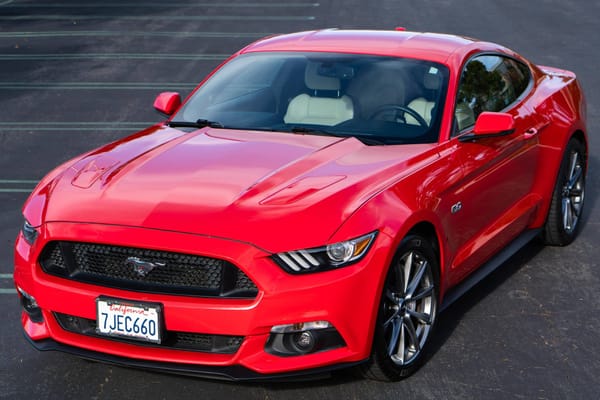20 Worst American Made Engines of All Time

I am about to guide you through an adventure through the scrapyard of American engine history so hang onto your seat buttercup. I've seen carburetors cough up more smoke than a Grateful Dead concert, and I've heard engines knock louder than my ex-wife at the door wanting alimony. So, trust me when I say these are the real clunkers. Forget horsepower and torque – we're talking facepalm-power and wallet-torque.
The 20 Biggest Mechanical Misfires to Ever Crawl Outta Detroit (and a Few Other Places)
Introduction: Where Dreams Go to Rust
Look, calling an engine the "worst" isn't just about 0-60 times. The complete package of car issues combines mechanical breakdowns with repair expenses that drive owners to tears and the sensation their vehicle exists to cause financial destruction.
The complete unpleasant journey of vehicle ownership serves as a definition of the worst owner experience. We're talking about engines that make mechanics rub their hands together with glee (because they're about to make a boat payment off your misery).
The Malaise Era? More like the Mal-EASY Era for repair shops. American car brands from Detroit released faulty vehicles during this time when Japanese producers delivered dependable automobiles which took both fuel and time efficiently.
The Hall of Shame: A Ranked Analysis of Automotive Atrocities
(Rank 1) Chevrolet Vega 2.3L I4 (1971-1977): The Aluminum Albatross

Engineers took a poor turn in their design work when they created this defective product. Chevy attempted to use aluminum blocks in the Vega but discovered they failed just like a waterlogged paper sheet. These engines overheated and consumed excessive amounts of oil then caused the cylinders to break down at a rate exceeding my knees did at a disco.
(Rank 2) Oldsmobile Diesel V8 (Primarily 1978-1985): The Diesel Disaster

Oldsmobile turned a gas engine into a diesel but the outcome produced absolute disaster. These gaskets experienced blowouts as frequent as politician campaign vows. Add in fuel problems, and mechanics who didn't know a diesel from a donut, and you've got a recipe for a class-action lawsuit.
(Rank 3) Cadillac V8-6-4 (L62) (1981): The Cylinder-Dropping Dud

The cylinder deactivation concept of Cadillac led them to believe they were creating a remarkable innovation. According to history the computers of that era possessed intelligence at the level of a dull rock. The result? Driving a Cadillac V8-6-4 L62 felt like being on a wild horse because its unpredictable movements sent you flying all over the place.
(Rank 4) Cadillac HT4100 V8 (1982-1988): The "High Tech" Heartache

"High Technology"? More like "High Trouble." This engine system failed in multiple ways since its head gaskets leaked badly while the oil pumps stopped working and the power output became unreliable in heavy conditions.
(Rank 5) Ford 255 Windsor V8 (1980-1982): The Weakest V8 Ever

Ford downgraded their 302 V8 into a puny version which they labeled as the 255 Windsor V8. The power output felt so feeble that it turned a Yugo into a muscle car. The fuel crisis demanded a solution from Ford and this was their response. Pathetic.
(Rank 6) Chrysler "Lean Burn" V8 Engines (1976-1980): Lean on Reliability? Not a Chance!

Chrysler's "Lean Burn" was a good idea on paper – burn less fuel, save the planet. The computer operating system proved to have less intelligence than a basic hammer while its operation reliability functioned similar to how politicians break promises. The mechanics removed the entire faulty system from vehicles.
(Rank 7) Ford 6.0L Powerstroke Diesel (2003-2007): The Power-LESS-stroke

The engine delivered impressive power until its engine failures occurred. The EGR cooler blocked while the head gasket failed and the oil system operated as an impending disaster. It's a shame, because when it did run, it was a beast.
(Rank 8) GM 2.8L V6 (LR2/LL2) (1980-1989): The Noisy Nothing

This V6 produced more noise than actual power capabilities. This engine operated weakly while leaking fluids and failed to interest anyone who watched it. GM distributed this engine to every vehicle model but people only experienced regret from the decision.
(Rank 9) AMC V8 Engines (Various Displacements, Primarily 1966-1991): The Oily Oafs

All AMC V8 engines carried excessive weight because the oiling system operated poorly. The timing cover contained the oil pump which failed to endure like bell-bottoms. Searching for replacement components for these antique dinosaurs will prove extremely difficult.
(Rank 10) Ford 5.4L Triton V8 (Primarily 1997-2010): The Spark Plug-Shooting Surprise

The cylinder head of this particular engine was known for sending spark plugs flying during operation. The procedure of changing plugs became nearly impossible. They'd break off. Additionally the timing chain would eventually destroy itself by excessive rattling. Good times.
(Rank 11) Chrysler 2.0L SOHC I4 (Neon Engine) (1994-2010): The Neon Nightmare

The Neon received its main power from this engine which demonstrated the same dependability as a fraudulent salesperson's friendly demeanor. The car's head gaskets needed constant attention while the timing belt tended to break thus rendering the engine useless.
(Rank 12) GM 2.4L Ecotec I4 (2000-2019): The Ecotec Eco-NOPE

The engine suffered from multiple problems such as excessive oil usage which would embarrass an oil sheik and the accumulation of carbon and timing chain failure. The company once again demonstrated efficiency through headache-inducing results to their customers.
(Rank 13) Pontiac 265 V8 (1980-1981): The Pontiac Pipsqueak

The V8 engine which Pontiac produced became this tiny pathetic engine. This powerplant developed strength at the same level as a running hamster. The swift elimination of that engine proved to be the most beneficial decision made by the company.
(Rank 14) Ford Cologne V6 (Especially Early Versions) (1962-2011): The German Groaner

The German-built engine operated with harsh noises and insufficient power and rough operation. Later versions were a little better, but the early ones were just plain awful. The engine emitted a severe grinding sound similar to that of a full washing machine.
(Rank 15) Chrysler 3.7L V6 (2002-2012): The Underpowered Underachiever

This V6 was a dog. It struggled while producing weak sounds due to its thirst while operating. If you placed such an engine inside a Jeep then you would need to drive it at top speed to remain within the speed of other vehicles.
(Rank 16) Ford 2.3L Lima I4 (HSC Engine) (1974-1997): The Lima Loser

Despite its durability characteristics this engine had its share of issues. Slow performance combined with noisy operation made it as unexciting as eating a bland serving of oatmeal. A turbocharged version offered different choice but standard base vehicles were dull.
(Rank 17) PRV V6 (Used in DeLorean) (1974-1998): The DeLorean's Downfall (Engine-wise)

Although the DeLorean appeared stylish the French-built V6 engine turned out to be a disappointment. This car lacked power while breaking up regularly and produced a sound similar to a failing feline. The DeLorean's sports car engine fails to create desired futuristic speed and power.
(Rank 18) Small Block Chevrolet 262 V8 (1975-1977): The Smallest, Weakest Small Block

Chevrolet turned their renowned small block V8 into a miniature version with this project. And weak. This thing was a joke. They understood their error quickly so they removed the V8 from the lineup.
(Rank 19) Dodge Red Ram 241 Hemi V8 (1953-1954): The Baby Hemi That Barely Breathed

A Hemi? With only 140 horsepower? Yep. This was Dodge's attempt to make a "budget" Hemi, and it was a flop. The miniature version of this later, Hemis proved to be a pale comparison to its beefier descendants.
(Rank 20) Cadillac 4.1L V8 (HT4100 - Re-evaluation): Double Dipping in the Disaster Zone

The engine experienced such alarming problems that it deserves recognition twice in this ranking. Both technical difficulties and its feeble performance surpassed even a weak cup of morning coffee. Placing a bicycle engine in the vehicle would have produced better results than what Cadillac actually did with the product.
Conclusion: Learning from Lemons
So, there you have it. A tour of automotive misery. These engines taught us some valuable lessons: don't overcomplicate things, don't cut corners, and don't rush into production. Since these dismal times engines have made significant advances in their performance. But it's always good to remember the past, so we don't repeat it. Now, if you'll excuse me, I'm gonna go check the oil in my definitely not problematic classic car...


